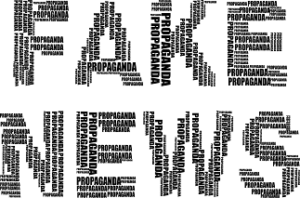Hacia una construcción conceptual de las Fake News
Epistemologías y tipologías de las nuevas formas de desinformación
El presente capítulo parte analizando las características del ecosistema comunicacional actual en conjunción con el crecimiento de contenidos pseudo-informativos y la ausencia de competencia mediática de las audiencias para hacerle frente al escenario de la posverdad en el que la desinformación aparece como estructural en la relación sujeto-medio. Posteriormente hace un análisis pormenorizado a las tipologías teóricas de las fake news a partir de una revisión crítica de la literatura académica emergente en Google Scholar de 2003 a 2017 (n= 34), identificándose cinco epistemologías sobre las mismas: noticias satíricas, parodia de noticias, fabricación de noticias, infopublicidad y propaganda. Como principales conclusiones emergen que no existe unanimidad conceptual sobre las fake news, aunque sí aparecen ciertos elementos comunes en todas las tipologías revisadas como son sus elementos estéticos, narrativos y la intencionalidad desinformativa. Asimismo, esta investigación propone un concepto integrado de las fake news, a partir de los elementos comunes ut supra reseñados.
Romero-Rodríguez, L. M., Valle-Razo, A.L., & Torres-Toukoumidis, Á. (2018). Hacia una construcción conceptual de las Fake News: Epistemologías y tipologías de las nuevas formas de desinformación. En M.J. Pérez Serrano, G. Alcolea-Díaz, & A.I. Nogales-Bocio (Eds.), Poder y medios en las sociedades del siglo XXI, pp. 259-273. https://www.romero-rodriguez.com/download/2145/


